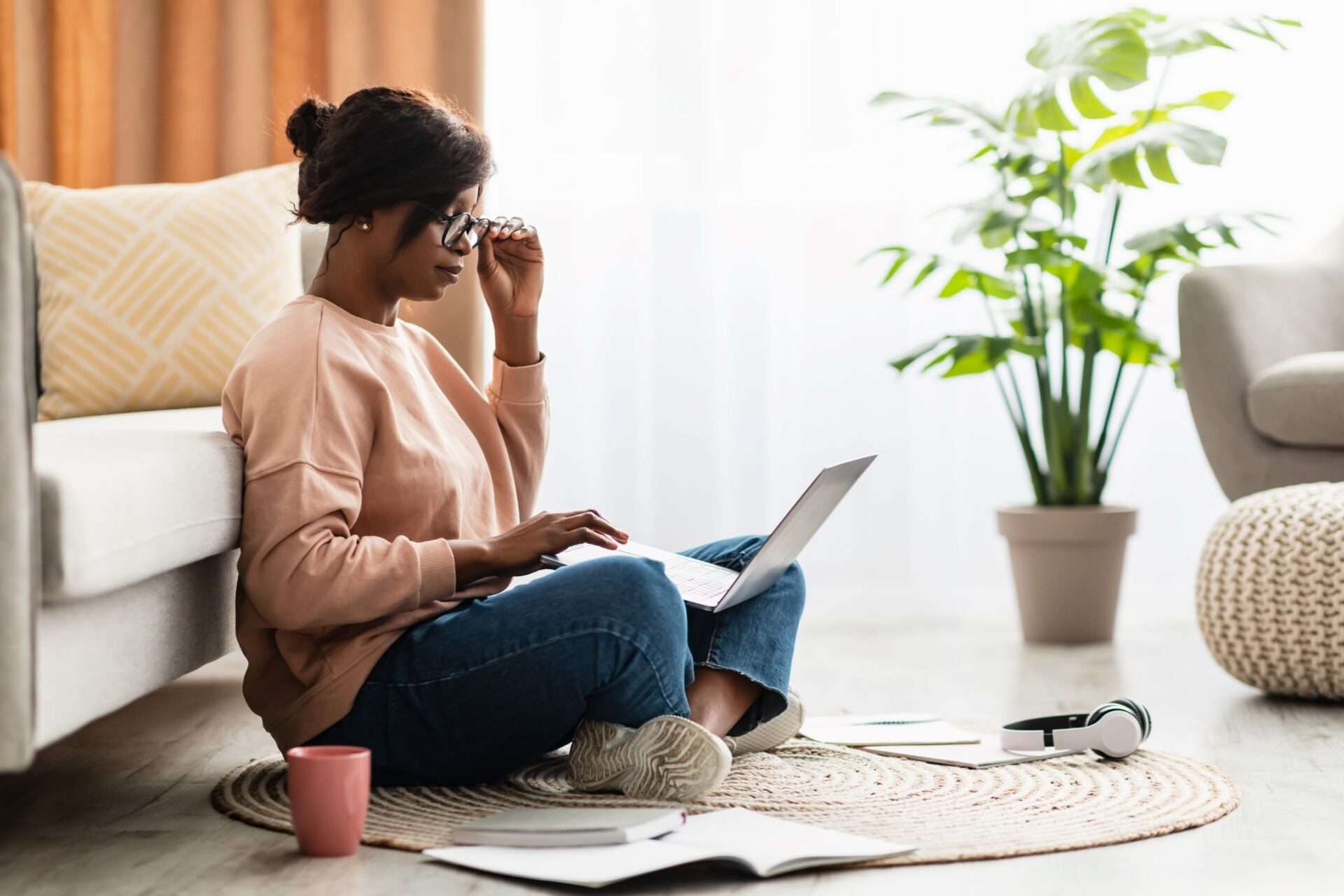
Did you know August is National Eye Exam Month? This annual observance is a reminder about the importance of getting regular eye exams. Each year, millions of Americans experience eye problems that can greatly impair their vision. But getting regular exams is the key to catching eye diseases early, correcting problems and protecting your sight. They’re also important at any age or stage of life. If it’s been a while since you’ve had your eyes checked, August is a great time to get an eye exam! Keep reading for more tips on keeping your eyes healthy, when to see a doctor and more.
What kind of eye doctor do you need?
There are two basic types of eye doctors, optometrists and ophthalmologists. The best choice for you depends on your eye care needs. For general eye care, either can be a good option. Both types of eye doctors can:
-
- Perform a comprehensive dilated eye exam.
- Write a prescription for glasses or contacts.
- Prescribe medications (may vary by state).
However, for complex needs, eye surgery or advanced eye care, schedule time to see an ophthalmologist.
When should you have an eye exam?
How often you should see an eye doctor can vary. The American Academy of Opthamology® (AAO) recommends adults get a complete eye examination at age 40. This is when early signs of disease or changes in vision may appear.
Below are a few other guidelines based on age:
-
- Children: Your pediatrician is able to do early screenings. Children should have at least one eye exam between ages three and five. After that, parents can consider exams or screenings every few years, or as your doctor recommends.
- Adults: Aim to have your eyes checked at least every five years until about age 39. After this, anywhere from one to every three years is recommended, based on your current eye health. If you’re a contact lens wearer or have conditions like diabetes, then going every year instead is suggested.
- Seniors: After age 65, adults should have an eye exam at least every one to two years. Your eye doctor will check for signs of age-related eye diseases such as cataracts, diabetic retinopathy, age-related macular degeneration or glaucoma.
After an exam, your eye doctor can tell you how often you should have your eyes checked in the future. It’s important to follow the schedule your provider gives you. This is especially true as you get older, since risk for eye diseases increases as you age.
What should you expect during an eye exam?
A comprehensive eye exam is simple, comfortable and should take about 45 to 90 minutes. Each part of the exam provides important information about the health of your eyes. A full eye exam includes a review of your medical history, visual acuity tests and more. Here’s a breakdown of what you can expect during a typical exam:
-
- Medical history review. Your doctor will ask you about your vision and whether you wear corrective lenses. They’ll also go over your general health, medications you take and your family’s medical history.
- Eye movement screening. An ocular motility test evaluates the movement of your eyes. It checks to see if your eyes are aligned and if the muscles in your eye are working properly.
- Eye pressure testing. This diagnostic test (known as tonometry) measures the pressure within your eye. It may involve a quick puff of air onto the eye or the gentle applying of a pressure-sensitive tip near or against your eye. This test also checks for risk of glaucoma.
- Pupil check. Your doctor will shine a bright light into your eye to see how your pupils respond to light. During a dilation test, pupils may also be dilated using drops. This is so doctors can examine your eyes more closely to identify damage and look for signs of disease.
- Refraction test. This test determines the best eyeglass or contact lens prescription for you. It will also determine whether you need corrective lenses at all. Looking through a device called a phoroptor, you’ll be asked to read an eye chart through varying refracted lenses.
- Slit lamp exam. This test lets a doctor see every part of your eye. They use a microscope to light up the front part of the eye. This includes the eyelids, cornea, iris and lens. It’s often used to check for cataracts, scars or scratches on your cornea.
- Visual acuity. Here, you’ll read an eye chart to discover how well you see at various distances. You’ll cover one eye at a time to determine how close you are to having 20/20 vision.
- Visual field test. This test checks your peripheral vision, or how well you see above, below and to the sides. It’s important in detecting many conditions, such as glaucoma.
Your eye doctor might also suggest other tests as needed. These can help detect problems in the back of the eye, on the eye’s surface or inside the eye. They may be needed to diagnose problems early on.
How to deal with eye injuries
If you have an eye infection, injury, or are experiencing pain, you should give it immediate attention. Injuries to the eye can include burns, scratches, an irritant or a penetrating injury or puncture wound. The good news is, you can sometimes treat an eye injury at home. Try things like a cold compress, over-the-counter pain relievers, eye drops or an eye patch to get quick relief. Also, be sure to wear protective gear during sports, when using chemicals or working on home projects.
However, if symptoms persist, make sure to call your doctor. It’s important to call a doctor if you ever experience blurred or double vision, eye pain along with a headache or other severe symptoms. You should also see a doctor if you have a black eye that causes dizziness or any changes in vision.
Other common eye problems
Besides injuries, other common eye problems can include allergies, dry eye, conjunctivitis (pink eye) or simple eye strain. These are often marked by red, swollen or itchy eyes, tearing and watering or sensitivity to light. To combat dry eye, try adding moisture to your room, take eye breaks and position your computer screen below eye level.
If you have eye allergies, these can usually be treated with over-the-counter aids. Treatments to try include artificial tears, decongestants or antihistamines. However, if you’re ever in doubt, check with your doctor or pharmacist about what may be right for you.
Cataracts and macular degeneration are some more common conditions. Cataracts, or a clouding of the eye, is the leading cause of vision loss in the U.S. Age-related macular degeneration can be a big concern for adults over 65, too. This condition comes in two forms (wet and dry) and can lead to a loss of central vision for many people.
Tips for healthy eyes
Luckily, preventive care can go a long way toward protecting your vision at any age. Below are six tips you can follow to help you keep your eyes healthy.
-
- Get regular eye exams. (Remember, August is a great time to get an eye exam!)
- Eat healthy foods good for your eyes, like dark leafy greens and fish.
- Wear sunglasses that block ultraviolet a (UVA) and ultraviolet B (UVB) rays.
- Don’t start smoking or try to quit.
- Maintain normal blood pressure.
- Wear protective gear during sports, at work and when you do household projects.
We don’t always realize it, but eye health is important to our overall health. Exams can often reveal underlying conditions or eye diseases that may be present with no warning signs or symptoms. And that’s just one reason to think about getting one this August.
So, this National Eye Exam Month, take a moment to schedule a comprehensive eye exam. Give your eyes some extra attention now—and see more clearly for years to come!
This article is for informational purposes only and is not meant as medical advice.
Sources
https://www.cdc.gov/vision-health/prevention/taking-care-of-your-eyes
https://www.aao.org/eye-health/tips-prevention/eye-exams-101
https://my.clevelandclinic.org/health/diseases/eye-injury



